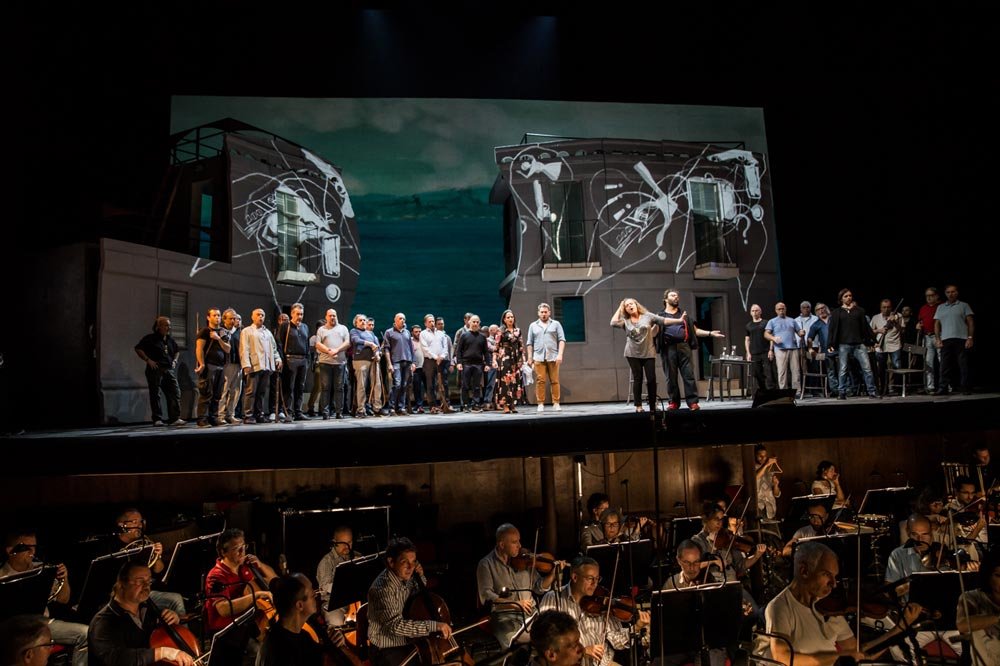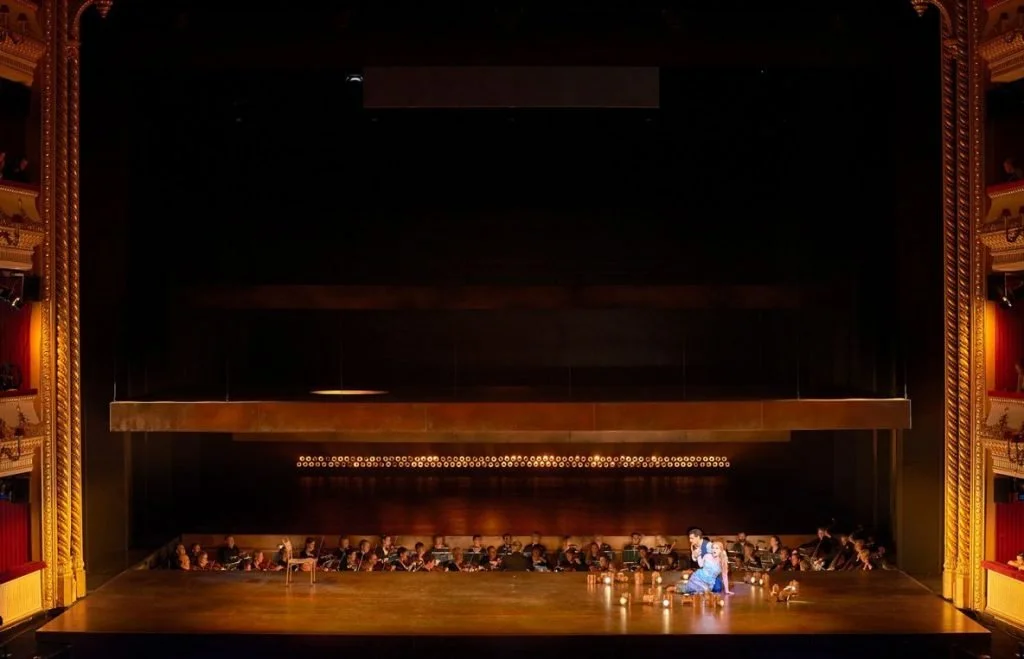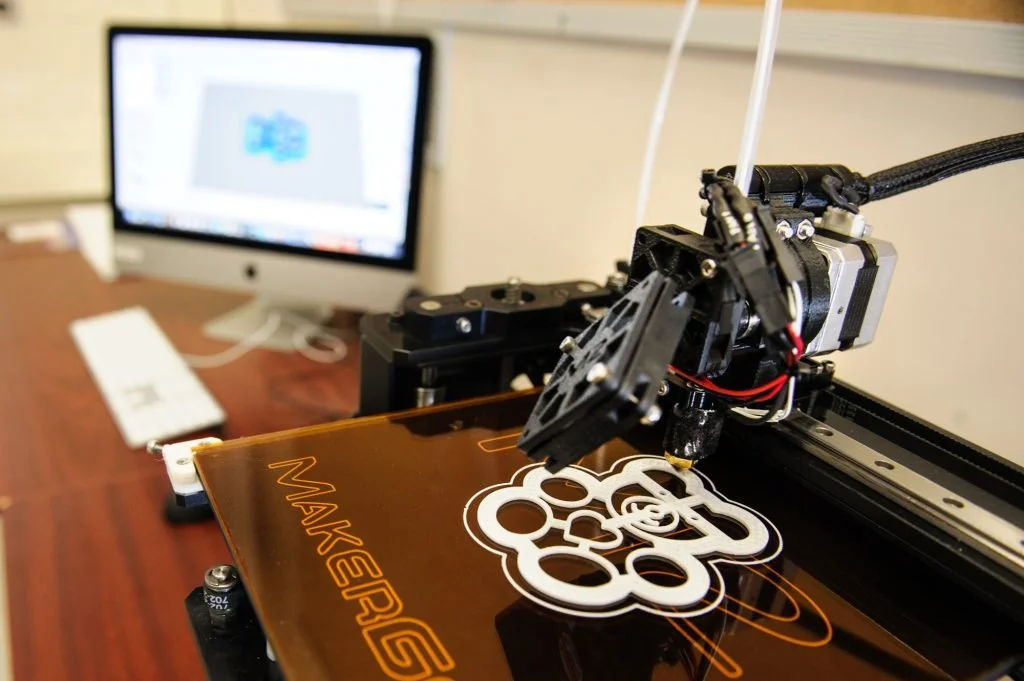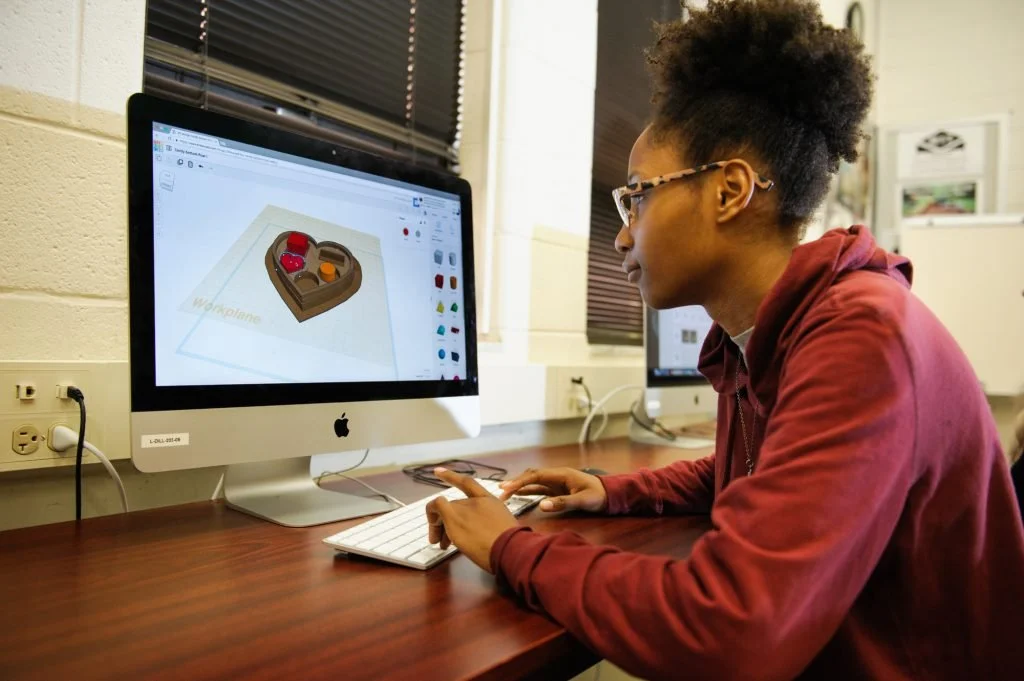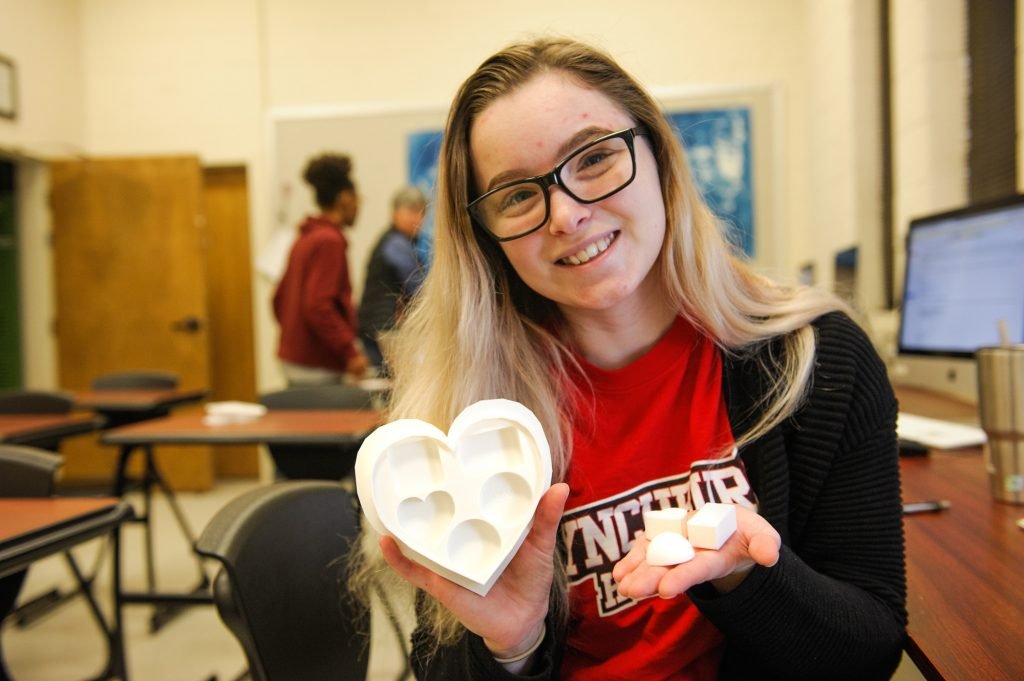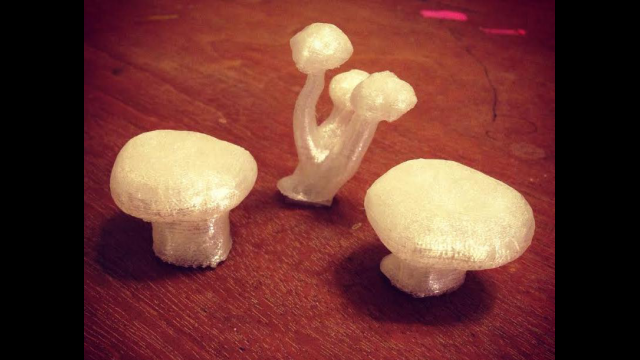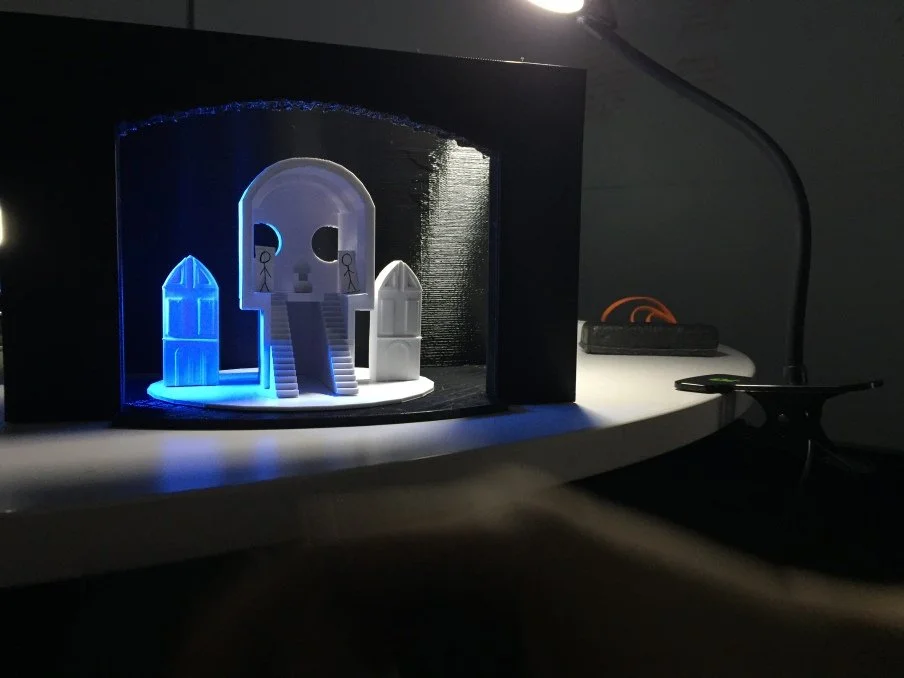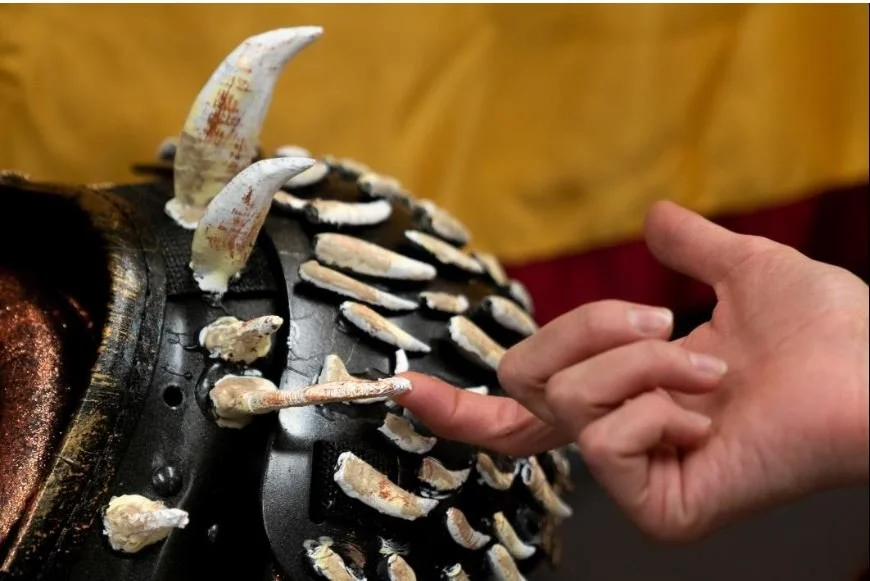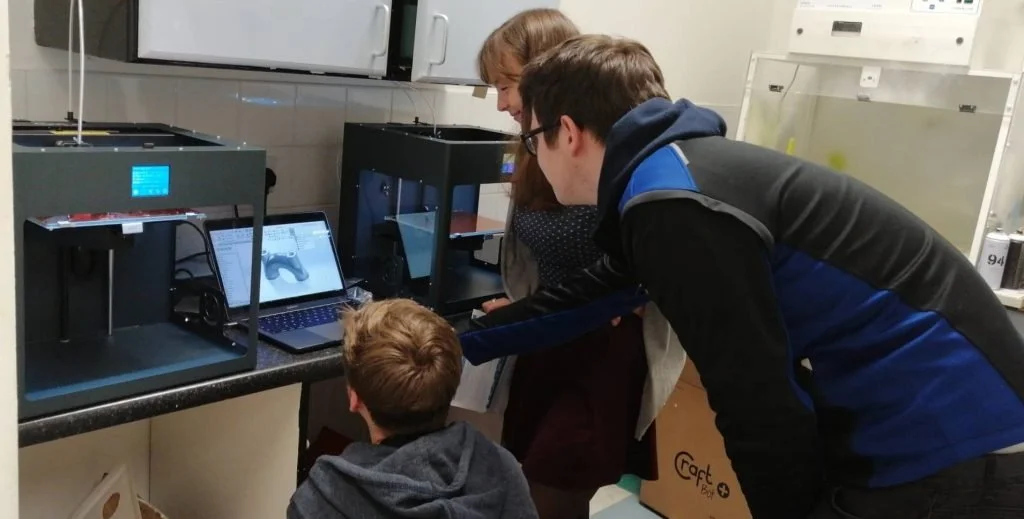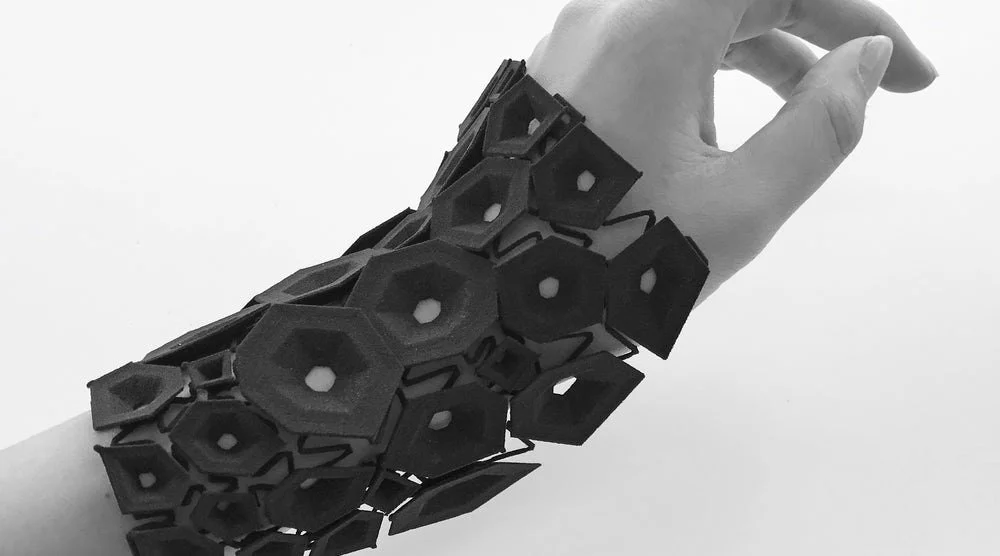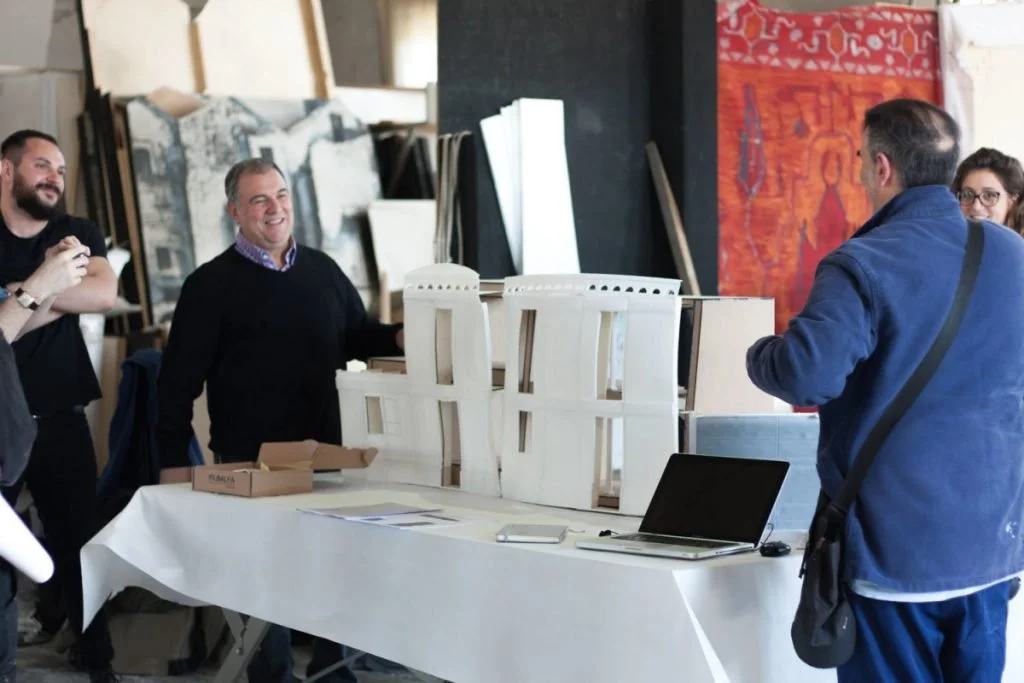Written by Katie Remark
Many industries have begun utilizing 3D printing to make work easier and more efficient. This technology is even making its way into the arts. Broadway theatres, university theatre departments, and theatres everywhere are implementing 3D printing technologies to construct props, and even to build entire sets. 3D printing brings new elements of realism and creativity into theatre. It is the future of stage and set design by enabling mass customization of specific designs and independent of outside factors, such as time constraints and availability. In recent years, the market for 3D printers in theatre has shifted from DIY projects to machines for professionals.
How Does 3D Printing Work?
Figure 1: A 3D printer in action. Source: Forbes
3D printing (also called additive manufacturing) is the process of making three dimensional solid objects from a digital file. The creation of a 3D printed item involves additive processes, where an object is created by laying down successive layers of a material until it is fully created. Each layer is a thinly sliced cross-section of the object. 3D printing enables the user to produce complex shapes using less material than traditional manufacturing materials.
To create a 3D printed object, users must start with a 3D model. This can either be created from the ground up, or downloaded from a 3D library. After the user has a printable file, it must be prepared for the 3D printer (slicing). Slicing is the process of cutting up a 3D model into hundreds or thousands of layers, which is conducted with a slicing software. After the file is sliced, it is ready to be inserted into the 3D printer, which can be done via USB, SD, or Wi-Fi. The file will then be 3D printed layer by layer.
During the advent of 3D printing technology, it was only used for prototyping and one-off manufacturing. Now, 3D printing is transforming into a widely-used production technology, becoming destined to infiltrate many industries – including the arts.
The First 3D Printed Set
The first entirely 3D printed set was for Fra Diavolo, a show at Teatro Dell’Opera di Roma, an Opera Theater in Rome, Italy (see Figure 2). The set was created by WASP, a 3D printing company in Rome, and took around 3 months to complete. It was made using cheaper material than what is usually used in 3D printing, and a total of five printers. To begin the process, the scenographer gave WASP a 3D printed model of deformed historic buildings divided into 223 pieces. This prototype was then used to create a lifesize model that could be used for the show’s set.
Figure 2: The first set to be entirely 3D printed. Source: 3D Wasp
3D Printing Takes Broadway
Figure 3: A video presenting the collaboration between WASP and the Teatro Dell’Opera di Roma. Source: Youtube.
Figure 4: The use of 3D printed lights on Broadway. Source: Form Labs
Broadway scenic designers Kacie Hultgren and John Lee Beatty know that 3D printing technology has revolutionized the modern-day theatre world. One of their first tasks for each show is to create a miniature model of the set to show to the director, and the rest of the team, what the scenic environment will look like. Usually, creating this miniature model is tedious, and takes around one week. But with 3D printing, the models are created more quickly, and are primarily made out of plastic. The printer can create a fully-formed prototype of any object, and as 3D printing technology becomes more sophisticated, so does the speed at which objects can be completed. Additionally, it is common to need more than one of the same piece. With 3D printing, identical pieces can be printed. For the production of Outside Mullingar, Hultgren was able to create large sections of entire sets of furniture. The desktop printers used for Broadway shows are large, and able to print entire scenic units to scale. 3D printing technology has been used to create sets for productions such as Roundabout Theatre Company’s 2012 productions of Don’t Dress for Dinner, The Nance, Orphans, and The Snow Geese.
3D Printed Theatre Props
Figure 5: A prop being created for a production by University of Lynchburg students. Source: University of Lynchburg
Although building an entire set with 3D printing technology is not yet common, 3D printing props is a quick, easy, and cheaper way of creating exactly what a production needs, whether a World War II-era handgun or a skull-shaped candy dish. It is an easier and cheaper way to acquire items that are no longer being produced, such as brooches or hatpins for a period piece. It gives the set designer(s) a way to be more flexible and creative with their set design, and the team can be involved throughout the entire process. Printing does not have to be constantly monitored while in progress, it allows for the freedom of prop customization, and the object can go back in the 3D printed if details need to be changed. 3D printing can also be used to create miniatures on a small-scale model to save time instead of physically carving out all of the little details. The process can take 20 minutes to up to a couple of hours, depending on how complicated a prop’s design is. 3D printing is also helpful if a prop needs to be broken in a scene, as multiple replacements can be created with ease. The 3D printer is becoming an important tool in a theatre designer’s tool bag. And it’s now being taught to future generations of theatre professionals. 3D printing skills are giving them a competitive advantage in the job market.
Implementing 3D Printing into Theatre Education
Figure 6: A theatre student using an open-source 3D printing software to create a set model. Source: University of Lynchburg.
Not only is 3D printing being used in professional theatre, but it’s also being taught to future theatre technicians and scenic designers at universities, such as the University of Lynchburg, Baylor University, University of Pennsylvania, Arizona State University, Trinity College Dublin, and Royal College of Art.
University of Lynchburg (Lynchburg, Virginia)
Figure 7: A student holding a 3D-printed heart-shaped candy box. Source: University of Lynchburg
Christopher Otwell, assistant professor of design and technical director at the University of Lynchburg, is teaching students to create props in a 3D printing course. Students use open-source software, such as Tinkercad and Simplify3D, to make props with the theatre department’s 3D printer. For one of their first projects, they were instructed to replicate an Old Bay seasoning jar. They have also made luggage tags, rubber ducks, and a heart-shaped candy box complete with plastic candies. After designing the props in Tinkercad, they then use Simplify3D to determine how many layers are involved, how much the project will cost, and how long it will take to print each item. The course is a win-win situation for both the Otwell and the students. The students learn a new skill, and Otwell is able to delegate prop making work for productions. 3D printing is making a direct impact on the university’s theatre program.
Figure 8: 3D printed mushrooms for a production of Into the Woods. Source: Baylor University
Baylor University (Waco, Texas)
For Baylor University’s production of Into the Woods, the team used a 3D printer to create synthetic beans, mushrooms, and more. Using 3D printing software, the Assistant Professor of Theatre Arts, Joe Kucharski, was able to tug, flatten, and pinch a digital “ball of clay” into the desired shape – two dozen beans and a dozen mushrooms for the Witch’s dress.
University of Pennsylvania (Philadelphia, Pennsylvania)
Figure 9: A 3D printed set of the first scene of Shakespeare’s Hamlet. ShakSource: Penn TRL
At the University of Pennsylvania, former Lecturer of Theatre Arts, Eric Baratta, incorporated 3D printing into courses using a software called SketchUp. Students were assigned to look at the first scene of Shakespeare’s Hamlet, specifically the elements of design (line, dimension, movement, light, color, and texture) and composition (unity, harmony, contrast, variation, balance, proportion, emphasis, and rhythm/movement) to build virtual scenes. Students then finalized their designs and optimized them for 3D printing. The simplicity of the students' designs carried through elegantly to the physical model, and the projects were all extremely successful.
Arizona State University (Tucson, Arizona)
Figure 10: Costumes for Ajax created through 3D printing. Source: TriMech Blog.
Arizona State University’s Makerspace is designed for students to collaborate and explore new skills. Students used the software MakerBot Replicator+ to create costumes for a production of the Greek tragedy Ajax. This production involves costumes decorated with teeth. With 3D printing technology, students working in Makerspace were able to scan the teeth and print them in-house. This decreased their budget and provided the students with a new learning opportunity. The use of a 3D printer has helped to create an open and collaborative community at the university.
Trinity College Dublin (Dublin, Ireland)
Figure 11: Students of the Lir school at Trinity College Dublin using 3D printing technology. Source: CraftBot
The Lir: National Academy of Dramatic Art at Trinity College Dublin offers courses that provide unique, practice-based experiences for their students. The Academy has a partnership with Craftbot, a brand of 3D printing technology. Craftbot gave college two 3D printers to enhance learning possibilities for students. Maree Kearns, Head of the Master of Fine Arts in Stage Design, notes that the printers are not only used for set design, but also costume design. 3D printing can be used to make fabric and fabric layovers, accessories, medals, pins, and buttons for costumes. The 3D printers are accurate and simple to use, and are compatible with multiple types of filaments, such as plastic, wood resin, or metal. Professors at the college understand that as 3D printing becomes more mainstream, students need to be able to use it.
Royal College of Art (London, England)
Figure 12: Part of a costume created by a SLS 3D printer for the Royal College of Art’s production of Farewell My Concubine. Source: Machine Design
The Royal College of Art’s production of Farewell My Concubine, featured actors wearing unique pleated costumes created a Selective Laser Sintering (SLS) 3D printer. Students who worked on this project created algorithms that were read by printer software to generate pleated fabric that could contour the actors’ bodies. This type of 3D printing technology uses these created algorithms to selectively harden parts of mass powder in a vat. After being cured by a laser, the pleated design remains intact and the excess powder is removed. This project was groundbreaking for the school, and taught the students a more complicated process of 3D printing technology.
Conclusion
Source: 3D Wasp
As 3D printing technology has become more sophisticated and accessible, the theatre industry has picked up on its use. This has created an atmosphere where the theatre world in all types of settings have a chance to newly implement this technology in the arts. Many of these projects have paved the way for a collaboration between theatre and 3D printing. Now that it has gained traction some capacity, 3D printing is transforming the theatre industry, and making the process of set construction faster, cheaper, and of a higher quality.
+ Resources
Andreoli, Maurizio. “The first 3d printed Scenography.” Wasp. September 29, 2017. https://www.3dwasp.com/en/the-first-3d-printed-theatre-scenic-design/.
“Autodesk Tinkercad.” Tinkercad. Accessed March 4, 2022. https://www.tinkercad.com/.
“Complete 3D Printing Solutions Customized to Your Experience.” Craftbot. Accessed March 4, 2022. https://craftbot.com/.
“Five Industries Utilizing 3D Printing.” Markforged. Accessed March 4, 2022. https://markforged.com/resources/blog/five-industries-utilizing-3d-printing.
Gentry, Bryan. “3D printer brings ideas to life for theatre students.” University of Lynchburg. March 12, 2018. https://www.lynchburg.edu/2018/03/3d-printer-brings-ideas-to-life-for-theatre-students/.
Goodrich, Terry. “Sculpting Costumes with 3D Printers is ‘the Way Theater is Headed,’ Theatre Arts Chair Says of Baylor’s New Technology.” Baylor University. October 8, 2014. https://www.baylor.edu/mediacommunications/news.php?action=story&story=147219.
“Improve Your Print Quality With Powerful 3D Printing Software.” Simplify3D. Accessed March 4, 2022. https://www.simplify3d.com/.
“Lighting Up the West End With High Accuracy 3D Printing.” Formlabs. August 5, 2021. https://formlabs.com/blog/lamp-pencil-3d-printing-entertainment-light-design/.
“MakerBot Replicator+.” Trimech. Accessed March 4, 2022. https://trimech.com/products/makerbot-replicator.
Ramsey, David. “Surprising Ways a Performing Arts Department Can Use 3D Printing.” TriMech. August 28, 2020. https://blog.trimech.com/surprising-ways-performing-arts-department-can-use-3d-printing.
Scully, Leah. “3D Printed Costumery Creates Juxtaposition between Culture, Theater, and Tech.” MachineDesign. November 9, 2017. https://www.machinedesign.com/3d-printing-cad/article/21836155/3dprinted-costumery-creates-juxtaposition-between-culture-theater-and-tech.
Simonson, Robert. “3D Printers Revolutionize Work of Broadway Scenic Designers.” Playbill. March 2, 2014. https://www.playbill.com/article/3d-printers-revolutionize-work-of-broadway-scenic-designers-com-214428.
Somers, Ira. “State Design Just Got Easier with 3D Printing.” Massivit 3D. July 19, 2018. https://massivit3d.com/blog/stage-design-just-got-easier-with-3d-printing/.
“Theatrical plays with 3D printed props and decorations.” Craftbot. Accessed February 25, 2022. https://craftbot.com/casestudies/The-Lir-Academy.
“What is 3D Printing?” 3D Printing. Accessed March 4, 2022. https://3dprinting.com/what-is-3d-printing/.
“Where great ideas get to work.” SketchUp. Accessed March 4, 2022. https://www.sketchup.com/
Witherel, Claire. “3D Printing Meets Theatre Set Design @ Education Commons.” Penn Teaching, Research & Learning. May 16, 2018. https://penntrl.wordpress.com/2018/05/16/3d-printing-meets-theatre-set-design-education-commons/.



